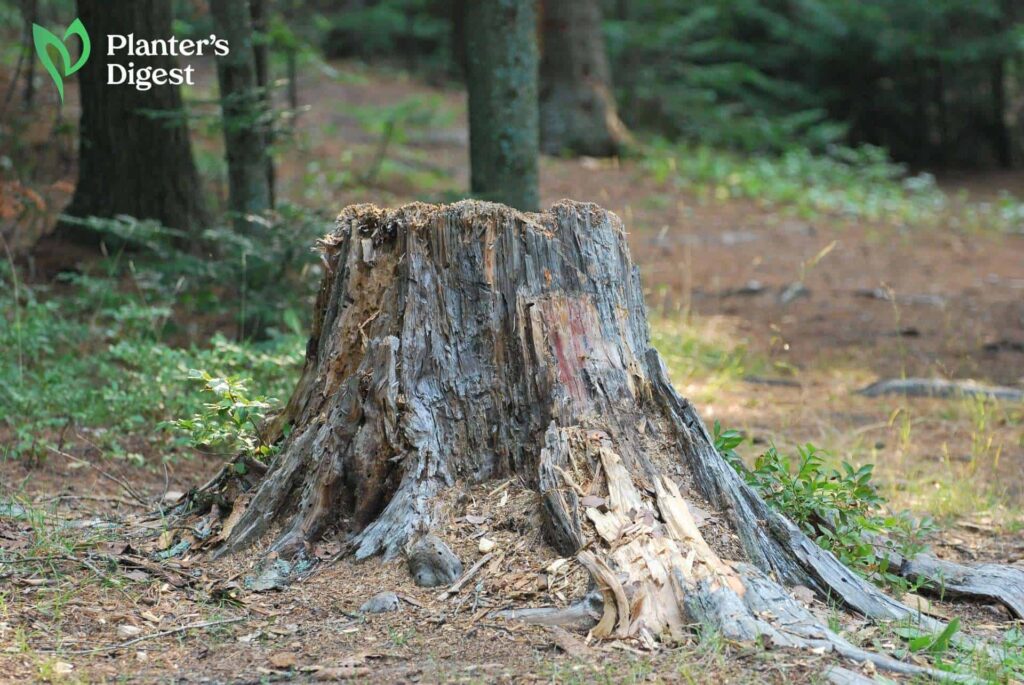
Ready to move on from the tropical vibe and give your garden a major aesthetic overhaul? Moving on begins with saying goodbye to the palm trees in your backyard!
In this garden, we’ll take you through the different ways of removing palm tree stumps, which is the last step to getting rid of them completely. Read on below!
How do you kill a palm tree?
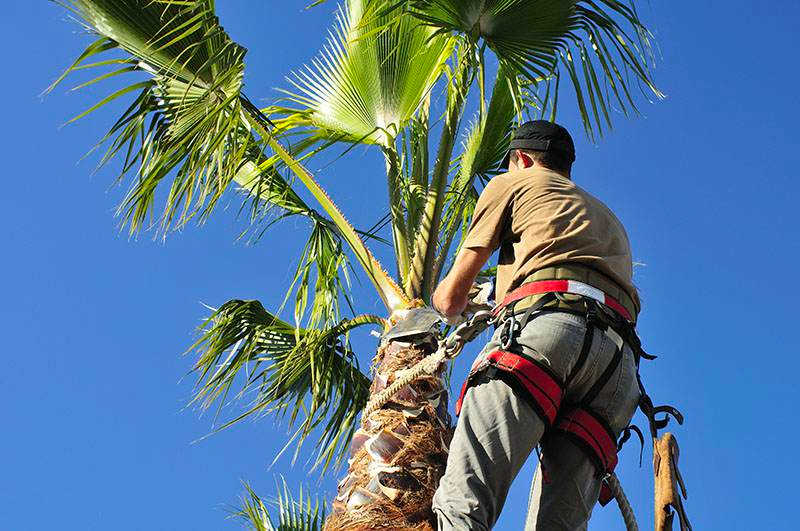
The best way to kill a palm tree is by cutting off the top portion of the tree trunk to stop the nutrients from flowing to the roots, eventually killing the whole tree.
How to Remove a Palm Tree Stump
To remove a palm tree stump, you can either let it rot naturally or chemically, grind it, burn it, or dig it out.
Read on to learn more about the specifics of each method!
1. Let the stump rot.
Rotting the stump aims to speed up the breakdown and decomposition process. There are two ways of rotting the stump – naturally or chemically.
1. Rotting the Stump Naturally
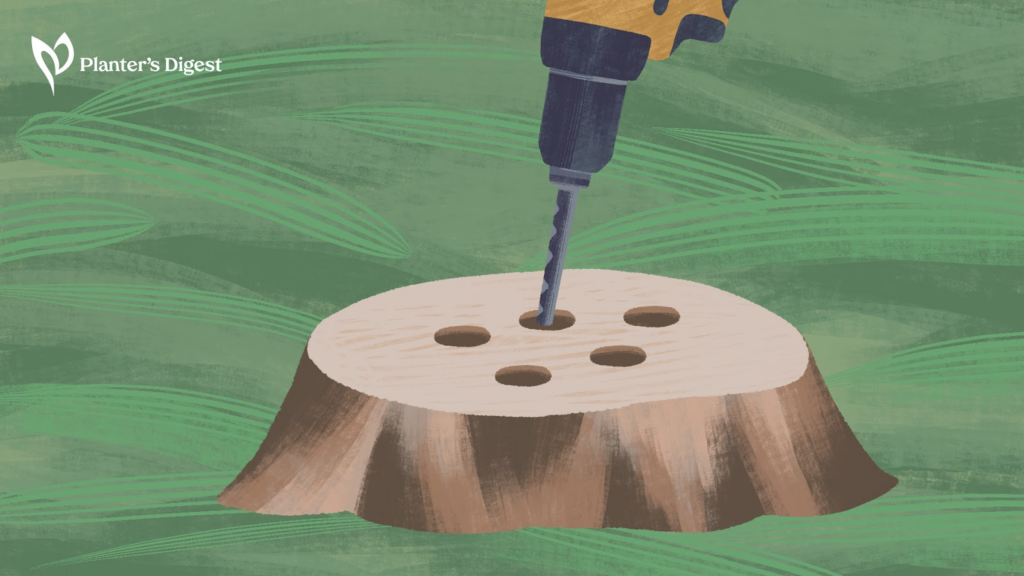
| Difficulty | Moderate ●●●○○ |
| Duration | 1 to 3 hours |
| Things You Need | • Nitrogen-rich materials • Trowel or plastic scoop • FunnelWarm Water |
To rot the stump naturally, you should cover the palm stump with nitrogen rich-materials like grass clippings, bone or blood meal, coffee grounds, compost, or chicken manure.
| How To Do 1. Drill 8- to 10-inch-deep holes on the top and sides of the tree stump. 2. Using a trowel or plastic scoop, fill the holes with nitrogen-rich materials. 3. With a funnel, fill each hole with warm water until the nitrogen source is dissolved. 4. Wait for a month until the stump softens and becomes completely rotted down. 5. Remove the rotted wood and level out the area. |
2. Rotting the Stump using Chemicals
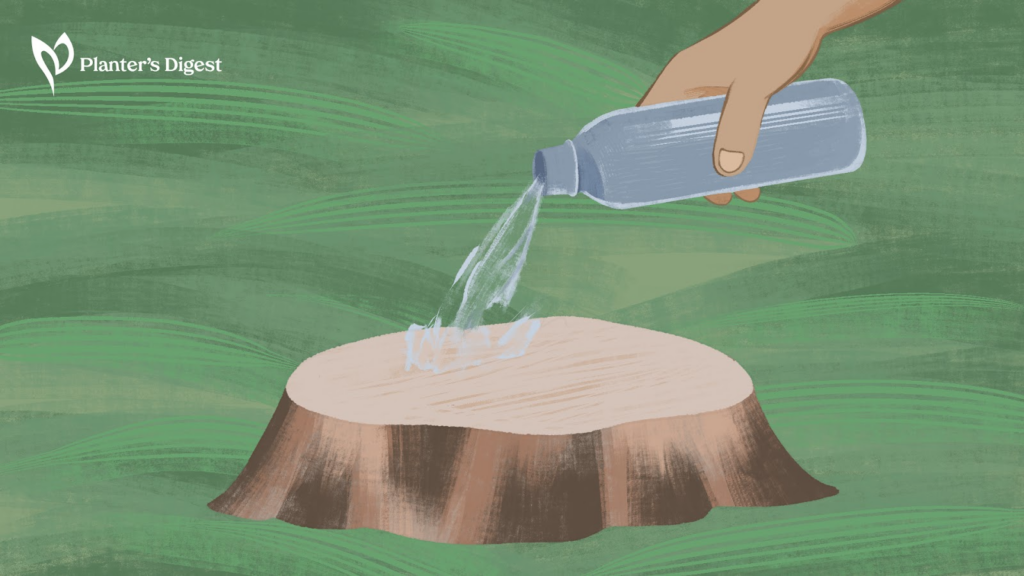
| Difficulty | Easy ●○○○○ |
| Duration | 1 to 3 hours |
| Things You Need | • Protective gear • Drill • Rotting aid • Tarpaulin |
To rot the stump chemically, you will need a potassium nitrate rotting aid. Potassium nitrate contains a high level of nitrogen, which speeds up the decomposition process of tree stumps.
| How To Do 1. Drill 8- to 10-inch-deep holes 2 to 3 inches apart into the palm tree stump. Make sure also to drill holes along the side of the stump. 2. Pour the rotting aid into the holes of the tree stump. 3. Cover the stump with tarpaulin and ensure the animals and children cannot get near the tree stump. 4. Wait for months for the tree stump to rot. The wood will turn into a spongy, mulch-like substance. 5. Once the stump has rotted, remove the debris by adding it to your compost and levelling the area. |
2. Grind the stump.
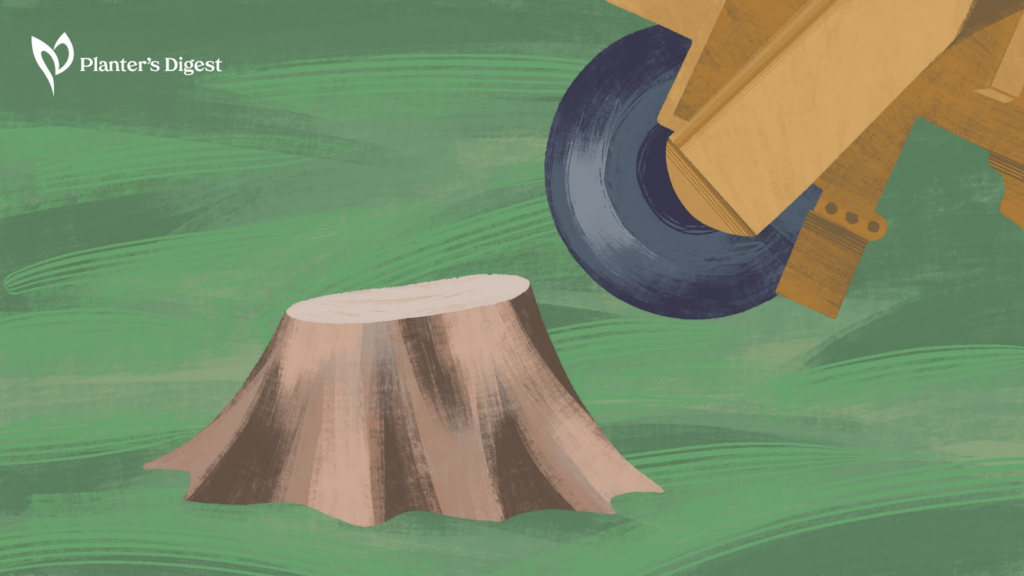
| Difficulty | Easy ●○○○○ |
| Duration | 1 to 2 hours |
| Things You Need | • Protective gear • Chainsaw • Stump grinder • Shovel |
Using a stump grinder is the fastest way to remove a palm tree stump. It has circular blades that grind the stumps down to their roots, permanently removing chances of resprouting.
| How To Do 1. Cut the palm tree close to the ground using a chainsaw. 2. Remove materials that may obstruct the grinder, such as rocks and nearby plants. 3. Run the stump grinder backward and forward over the stump. 4. Adjust the grinder downward to target the root ball of the palm tree. 5. Collect the wood chips and cover the hollow area with them and the soil. |
3. Burn the stump.

| Difficulty | Easy ●○○○○ |
| Duration | 1 to 3 hours |
| Things You Need | • Gasoline • Match or lighter |
Burning is another easy way to remove a palm tree stump but ensure no potential risk for wildfire near a forest or your home. You should also check on the homeowner’s rules and the laws of your city before proceeding with this method.
| How To Do 1. Pour the gasoline over the tree stump until it soaks deep into the wood. 2. Set the stump on fire. Monitor the fire throughout this process and wait for the flames to extinguish. 3. Pull the roots and level out the area if some roots are left. |
4. Dig out the stump.
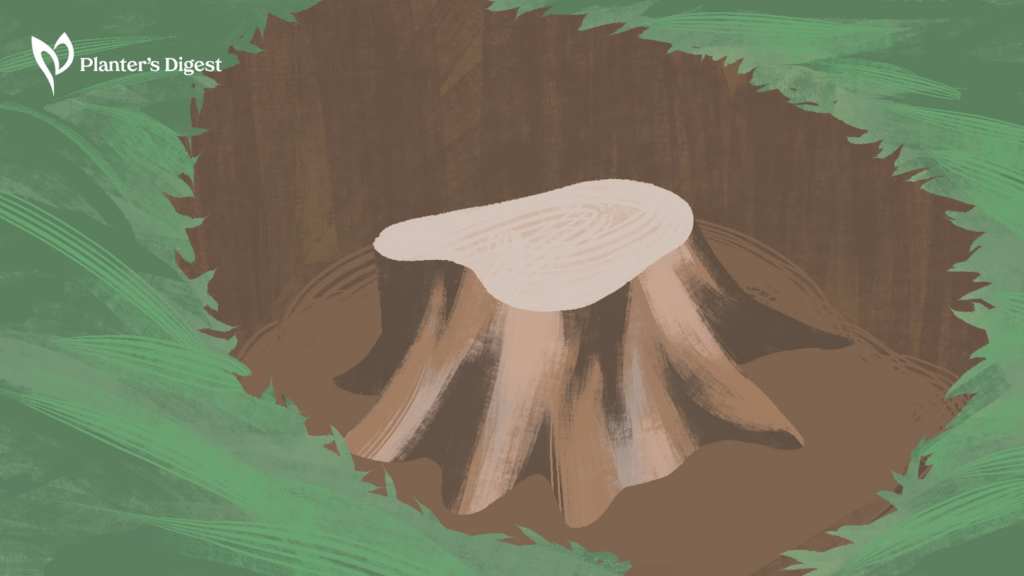
| Difficulty | Hard ●●●●○ |
| Duration | 1 to 3 hours |
| Things You Need | • Protective gear • Pick • Ax • Shovel • Crowbar • Sledgehammer • Four triangle wood inserts |
Digging out the stump is best for smaller-sized palms with shallow root systems, so check the size of the stump and root ball to determine if this process fits your palm tree.
| How To Do 1. Cut the stump using a chainsaw close to the ground. 2. Start digging around the tree stump until you can disconnect the trunk from the roots using an ax. 3. Remove the soil around the roots and detach them. Continue this process until the bottom of the root ball is exposed. 4. With a chainsaw, divide the trunk into four. 5. Place the four triangle wood inserts in the sliced parts of the trunk, and push them in using a sledgehammer. 6. Using a crowbar, split each trunk part into smaller pieces. 7. Remove the stump by digging out the trunk and root ball from the ground using an ax. |
Why should you remove a palm tree stump?
Palm tree stumps should be removed for additional space, as well as to keep your garden safe.
Woody areas, like palm tree stumps, attract yellowjacket hornets and skunks, so removing them will prevent becoming an animal or insect den.
With the extra space, you can plant new floras and give your garden landscaping a new look. You can also use the space to extend a deck or put a gazebo on your property.
A clear field will also free your outdoor area from stump obstacles and make it safe for your kids to play around.
FAQs on Removing Palm Tree Stumps
Saltwater cannot kill palm trees, especially coconut palms, because they are halophytes that can convert salt-rich water into drinking water. Even Epsom salts are used to cure nutrient deficiencies in palm trees and not to kill them.
The herbicide Roundup can kill a palm tree, but you will need gallons of it to kill a tree that grows up to 85 feet tall and with 10-foot-long fronds. To fasten the effect of Roundup, you can drill holes in the tree’s trunk so it will absorb the chemical faster.
Palm tree stumps are hard to remove because of their long and stringy root ball. This keeps the palm tree firmly planted in the soil and makes removing it difficult.
It takes seven years for a palm tree stump to decompose naturally. Owners and gardeners, however, can use chemicals and other equipment to speed up their decomposition process.
Palm tree roots grow only up to three feet into the ground. Palm trees have a fibrous root system that grows horizontally and creates a root ball instead of spreading in the soil like other plants.




